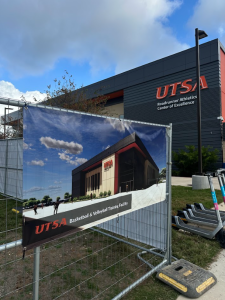Where Texas public schools went wrong
Illustration by Alex Hanks
October 20, 2020
Although many refuse to acknowledge the serious global health implications of COVID-19, it continues to wreak havoc on one country in particular: the United States. Whether this is the result of poor policymaking or simply public non-compliance, the infection rates continue to rise while countries such as Taiwan, New Zealand and South Korea have managed to keep their total death tolls below 100.
COVID-19 took all of us by surprise; individuals, businesses and even schools worldwide have had to adapt as we learn more about its high infection and mortality rate. The virus is easily transmitted and can cause very serious respiratory and immune system complications.
Many institutes of higher learning have resorted to online education in response to the pandemic. Public schools across the country, however, have received backlash in response to their decisions to provide in-person classes and require teachers to be present as they regularly would. Unfortunately, the Texas Education Agency (TEA) does not have the authority to close schools for health-related matters. Thus, many of the official decisions are left up to each school district.
One Texas school district in particular, Lake Travis ISD (LTISD), will be providing in-person learning to students in grades pre-K through 12. Students do, however, have the option to learn in an entirely online format. Similarly, Austin ISD will hold school in-person as normal but “continue offering remote learning for the entire 2020-21 school year” for those who select this option. San Antonio ISD utilized an all-online learning format for three weeks before transitioning to the same system allowing parents to have the choice between in-person and online learning for their children. A common theme starts to present itself: Why is in-person learning available and even encouraged for all students?
Online learning needs to be the official learning modality for the K-12 student population with in-person learning options available for select individuals as an accommodation rather than the norm. Many families rely on taking their children to school during the workday, and students may depend on their school to provide them with breakfast or lunch. In-person learning options need to be reserved for families who depend on it, whatever the reason may be, and not because they simply don’t believe in the pandemic and want their child to attend school as normal. Additionally, schools should do their best to maintain low capacity while strictly following Texas’ social distancing and mask orders and the TEA requirements for schools. Students and staff must both be educated on the symptoms of COVID-19 and how to prevent its spread.
In-person learning raises several concerns, each of which contribute to infection rates in the school and among the community. Face coverings are required in most public places in the state of Texas, including schools, but may be difficult to enforce; social distancing will become increasingly difficult to enforce the more students are in attendance. COVID-19 has an incubation period of two to 14 days and can be transmitted to others during this period; the likelihood of someone transmitting the virus before even showing symptoms is high. Ultimately, no matter how many precautions are taken, it is going to be very difficult to prevent the spread of COVID-19 in schools. In-school learning amid the pandemic puts not only students but teachers, staff and their families at risk.
Although we can appreciate the freedom for families to choose between in-person or online learning, most public schools in Texas are requiring teachers to be present at the school during normal hours. LTISD did not offer any entirely online secondary education teaching positions for the 2020-2021 school year.
Many school districts promised teachers online-only positions for the upcoming school year but ultimately failed to deliver. In the September 16 board meeting, LTISD students argued on behalf of their teachers, who were told there would be no online teaching positions despite COVID-19’s high infection rate and serious health consequences. According to a survey distributed to teachers by the district in July, 177 teachers in LTISD requested to teach remotely; superintendent Paul Norton shared during the board meeting that only about 70 of these requests were approved.
The decision to require teachers to attend school provoked a substantial number of resignations from teachers across LTISD. A petition signed by over 10,000 explains that Lary Schmidt, a physics teacher at Lake Travis High School, is unable to teach in an in-person environment; his wife is immunocompromised and presents a much higher risk of suffering from more serious complications from COVID-19. The petition requests that Schmidt continue to teach his students in an entirely virtual format throughout the school year.
In-person learning is crucial for educational instruction and physical, social and emotional development. However, we are in a global crisis, and we must do everything in our power to slow the spread of COVID-19 until vaccination options become available. We cannot sacrifice the lives of Americans for mere school attendance. We must practice effective and honest social distancing to protect those at an increased risk of suffering from more serious symptoms and those who work on the front lines and cannot always social distance. In-person schooling must remain the exception to promote low capacity in schools and therefore reduce the spread of COVID-19.







